All about star magnolia
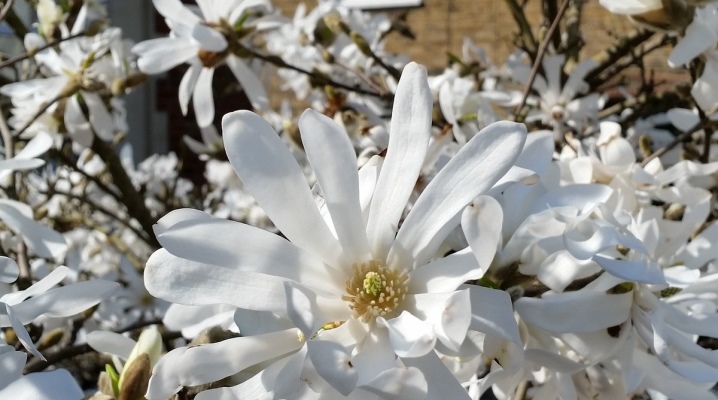
Homeowners looking to decorate their grounds with a beautifully flowering tree often opt for the magnificent star magnolia. This is quite natural: the flowers bloom on it long before the leaves appear, and their heady aroma spreads throughout the garden. What do you need to know in order to grow this tree? Let's figure it out.
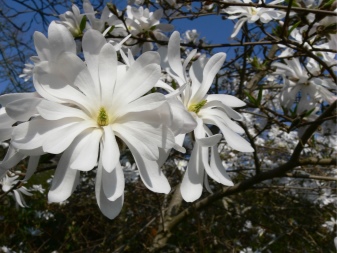
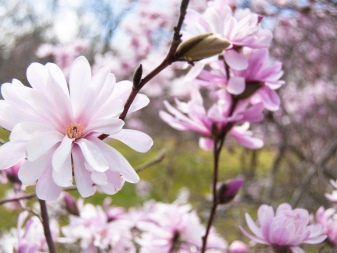
Description
Stellate magnolia, also called magnolia stellata, is a deciduous tree, less often a shrub. Let's consider its main characteristics.
- The height of an adult plant reaches 2.5 m, the annual growth is 15 cm.
- The crown diameter is 2.5-3 m, it has the shape of a sphere or an oval.
- The appearance of the flower resembles an asterisk with numerous elongated petals-"rays", which can be 12-24 pieces. Its diameter is 8-10 cm. The shade of the petals of the classic stellate is white and cream.
- The aroma of the flowers of the star magnolia is apple-honey, sweet.
- Flowering begins when the air temperature reaches + 15 ° C, and continues for 3 weeks.
- The leaves of the plant have the shape of a narrowed ellipse, 10-12 cm long and 3-4 cm wide. The upper part of the leaf is dark green, the lower part is lighter, slightly pubescent.
- Magnolia stellata is famous for its good winter hardiness. Loves the sun, but grows in partial shade.
- The small size and excellent decorative qualities of the tree make it possible to successfully use it in landscape design.
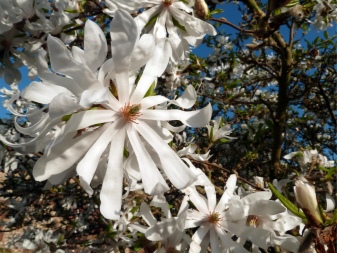
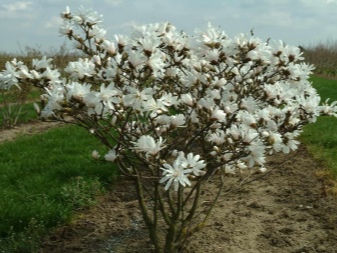
Popular varieties
Now let's get acquainted with the varietal variety of star magnolia.
-
Royal Star. Shrub variety, reaching 3 meters in height. The flowers are snow-white, the petals grow on them in 2 rows. It is a very frost-resistant variety - it can withstand temperatures as low as –30 ° С.
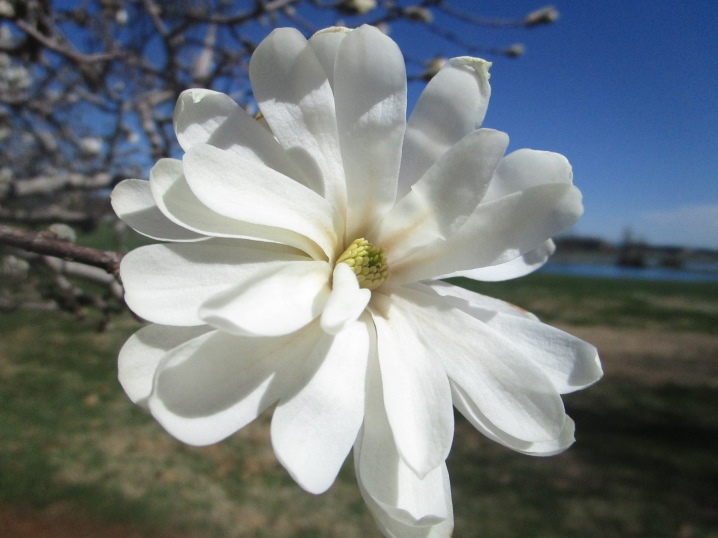
-
Rosea. Two-meter shrub with a lush spherical crown. The flowers are quite large, with pinkish petals (their number can be up to 20) and a strong, bright aroma. The tree tolerates winter normally.

- "Doctor Massey". It blooms profusely and continuously. The bud is pink at first, but when it blooms, the petals change color to snow-white and become terry. The plant reaches a height of 2.5 m. The winter hardiness of the variety is good.

-
Jane Platt. According to many gardeners, the most beautiful variety of magnolia is stellata. The color of the petals is pink, they are located in 3-4 rows, which makes the flower fluffy, it resembles a chrysanthemum. The diameter of the flower is also very impressive - up to 20 cm. The variety is frost-resistant.
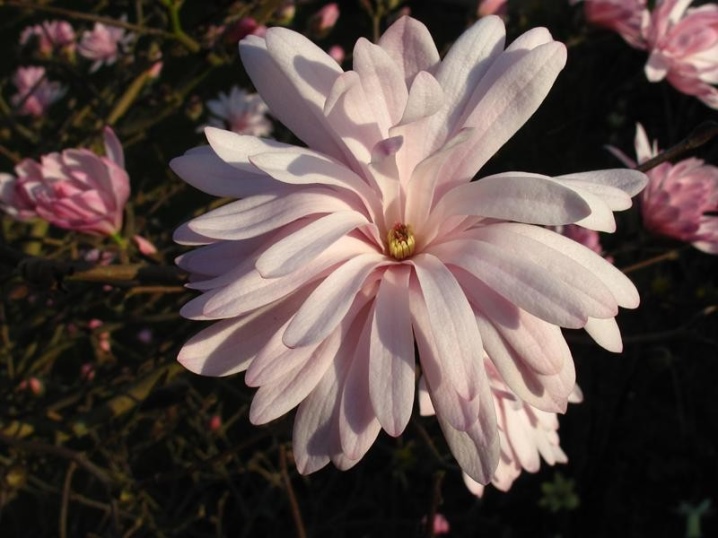
- Gold Star. It is rarely found, it is a hybrid of stellate magnolia and long-pointed magnolia. It blooms profusely, has a compact size. The shade of the petals is pale yellow, creamy, their number on a flower is 14 pieces. It blooms 7-14 days later than other varieties, due to which it blooms longer.
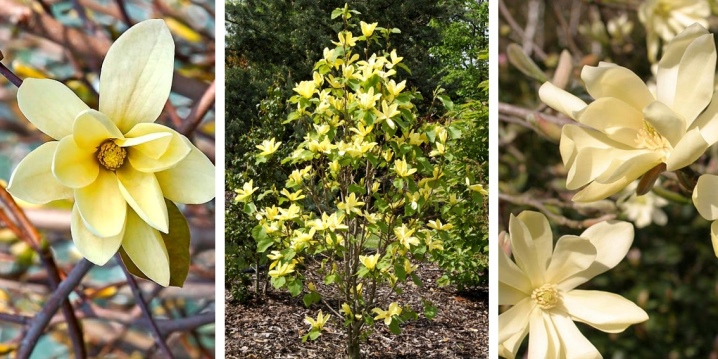
Landing
In order to successfully grow a magnolia in your garden plot, you need to choose the right place for planting a seedling. It is best to "settle" it in the south or southeast of the garden, where the sun's rays fall throughout the day - this applies to both solitary and group plantings. But there is one thing to consider: constant sun exposure will lead to the fact that the magnolia will appear too early, and you will not be able to fully enjoy its flowering.There is a solution to this problem: planting a stellate in the shade of tall trees.
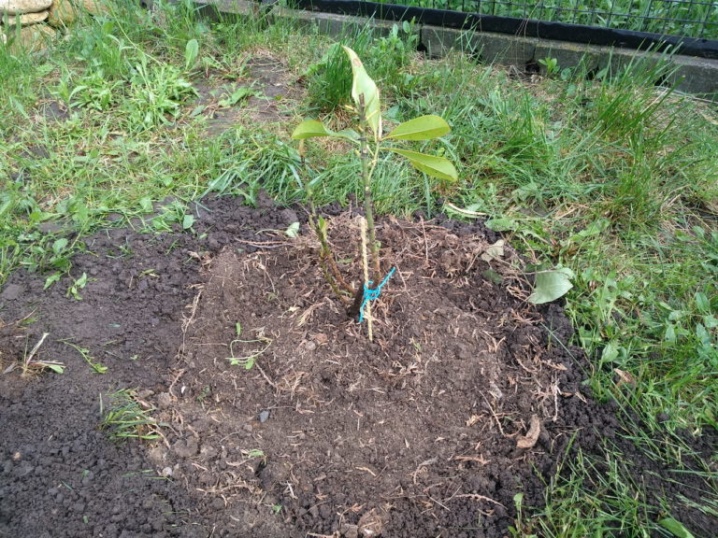
They "cover" the young growth from the scorching sun rays and at the same time do not interfere with the full growth and development of plants.
If the winters in your area are harsh, it is best to place the magnolia near the wall of the building on the southern side of it - this will protect it from the effects of cold winds and drafts. Frosts in late spring can "kill" flowers, but they are not dangerous for the tree itself.

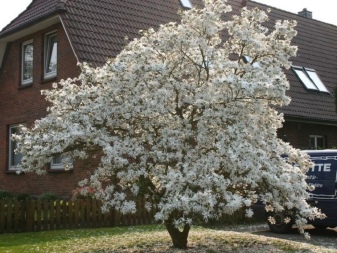
Soil selection
Magnolia stellata is quite demanding on the composition of the earth. Most of all, she "likes" fertile, loose, permeable soils with a neutral (pH 6.5-7) or slightly acidic (pH 5.5-6.5) reaction.
To successfully grow a tree, you need to know a number of nuances.
- It will not take root in limestone soil - the root system of the plant will stop developing. To lower the pH, the addition of high sour peat is required.
- If the groundwater is too high and the soil is constantly waterlogged, stellate growth may slow down.
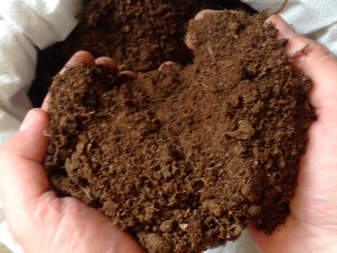
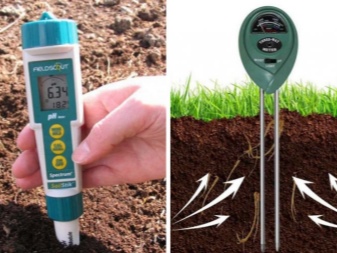
Choosing a seedling and planting time
It is recommended to buy young growth either in March or in autumn. Most often, trees go on sale already planted in containers or with an earthen clod on the roots.
As a rule, there are no leaves on them, and if there are, then you should not purchase them - such seedlings will not take root after planting in open ground.
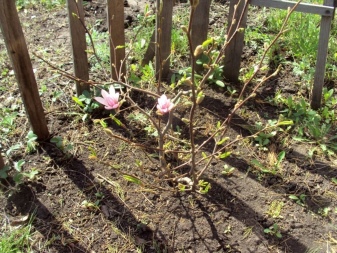
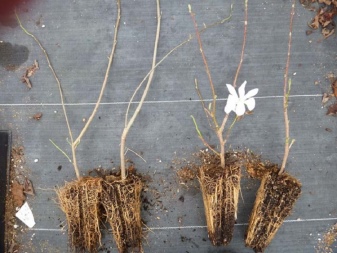
By the way, about this very planting, the opinions of professional gardeners are as follows - it is best to acquire and transplant a young magnolia in late autumn and here's why:
- if you plant it in the ground in the spring, over the summer it will acquire shoots that will not have time to woody before the cold weather, and the tree will simply freeze, while in autumn seedlings, growth slows down, and the readiness for winter is better;
- in spring, young growth is more expensive, and in autumn you can get a good discount.
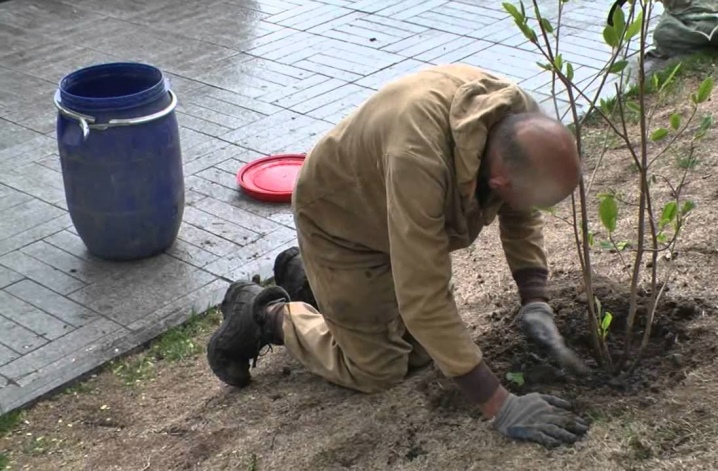
Landing in open ground
Let's analyze the algorithm of actions.
- We are preparing a planting hole - its diameter should be 2-3 times the volume of the root system of the seedling.
- Mix the soil that we removed from the hole with peat and rotted compost in a ratio of 2: 1: 1. If the density of the soil is too high, you can add a little sand.
- At the bottom of the dug hole, we lay a 20-cm layer of drainage, consisting of fragments of brick, gravel and expanded clay. Next, pour sand (about 15 cm), and then our prepared peat-compost mixture, where the tree will be placed. We install it in the middle of the fossa very carefully so as not to damage the root system.
- We transplant the young magnolia by transshipment directly from the container where it grew, together with the earthen clod. If you see dried roots, most likely the tree will not take root.
- The root collar should be 3-5 cm above ground level.
- Completely fill the hole with soil, lightly tamp it, water the seedling well. Once the moisture has been absorbed, line the trunk circle with peat mulch and cover with conifer bark on top to maintain soil moisture.
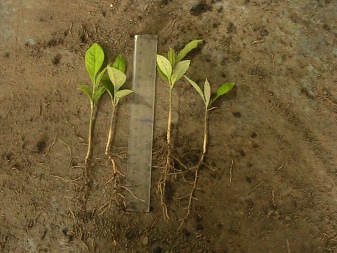
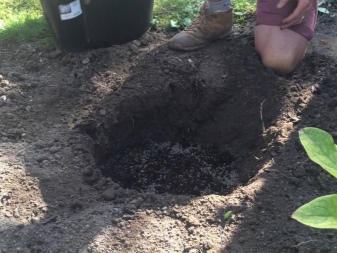
Care
Planting a tree is not enough, you also need to provide it with high-quality care.
Watering
Optimum humidity for star magnolia is 55-65%. If you live in a region with a temperate climate, you will need to artificially maintain this level with the help of regular watering. Stellata does not tolerate a prolonged absence of rain, although it gradually adapts to living conditions.
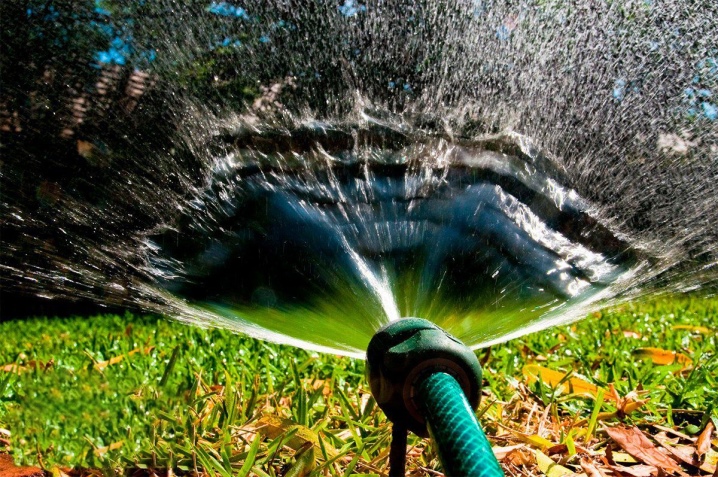
Shelter in winter
Before the onset of frost, the trunk circle needs to be mulched. The mulch layer should be about 40 cm.
The seedling itself is covered with agrofibre, burlap or thick cloth.
It should be remembered that star magnolia can suffer not only from frost, but also from thaw. If it suddenly warms up sharply in winter or early spring, the tree will have buds, and with the next drop in temperature, it will simply die.
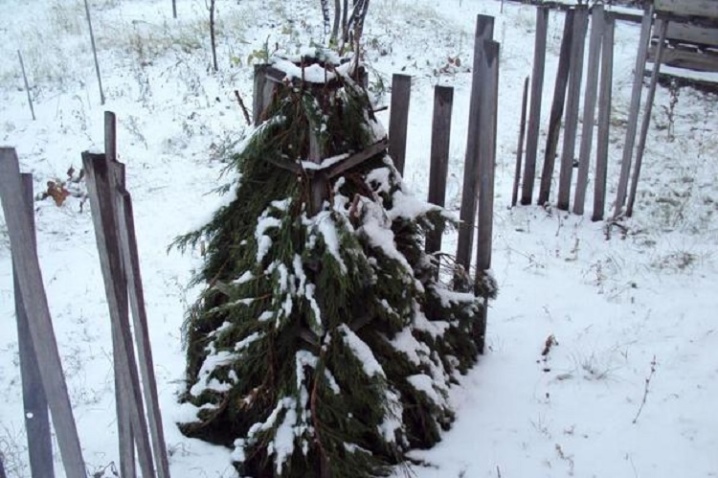
Pruning
Stellata does not need pruning - only periodic removal of dried shoots.
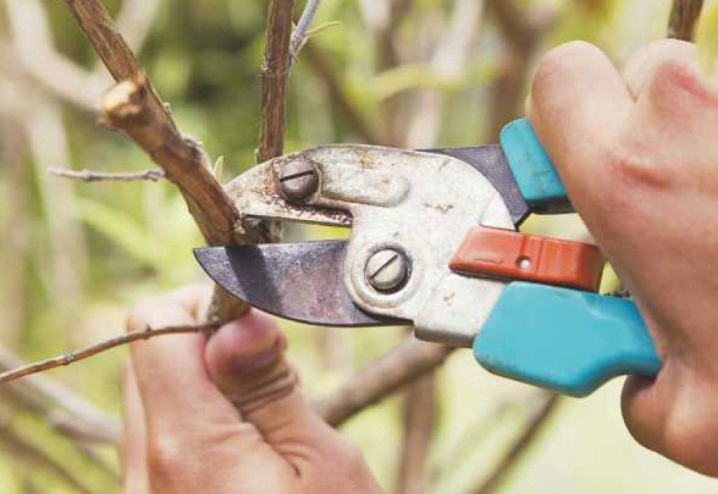
Top dressing
Universal mineral fertilizers are best suited. Application - once every 1-2 months during the first 5 years of the tree's life. A solution of weak concentration is needed, they are watered with magnolia.
If the soil is alkaline, you need to monitor the iron content in it, since its lack can lead to chlorosis. Feeding with chelated micronutrient fertilizer can help to level this problem.

Reproduction
Magnolia stellata reproduces in a vegetative way, but it does it very reluctantly, and even professional gardeners do not always succeed. By cutting and dividing the bush, it does not reproduce at all. There remains only one method, the results of which bear fruit, - reproduction by layering.
- A flexible shoot older than 3 years old is taken and attached to the ground with garden brackets. The place where the layering touches the ground is slightly notched.
- A layer of soil is poured on top - about 10 cm.
- After 2-3 years, the cuttings can be separated from the mother tree and transplanted to another place.
- For more successful reproduction and rooting, it is recommended to treat the incisions with growth stimulants by attaching a cotton pad soaked in solution to them for 2 hours.
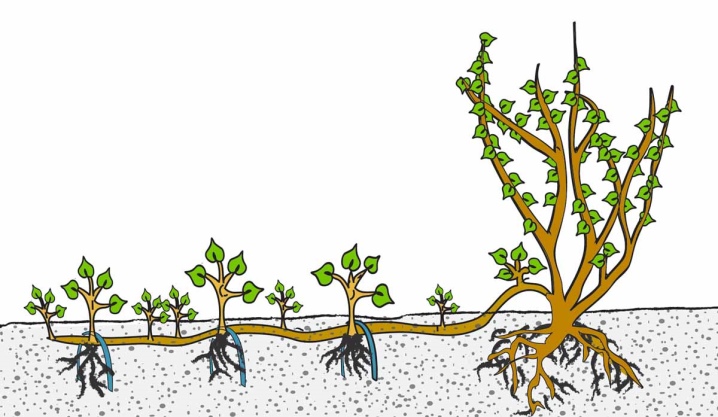
Diseases and pests
No matter how well you take care of your magnolia, you cannot protect it from all misfortunes. but it is better to know the enemy by sight, so that the fight against him is more successful.
- The most malicious pests that can destroy a tree are the mole and the shrew. Breaking through the passages in the soil, they gnaw at the roots. On the same step of the pedestal with them is a vole, which also spoils the root system, arranging a pantry in it for its supplies. How to deal with them? There are several ways out: the use of ultrasonic scarers and a variety of spinners, as well as planting seedlings in special wire baskets.

- In the summertime, magnolia is attacked by a spider mite. It feeds on the sap of shoots and leaves, which is why they soon dry out and fall off. To destroy this parasite, acaricidal and insectoacaricidal agents are used. If the tree is not too badly affected, you can spray it with Fitoverm, Aktofit; for more extensive lesions, Actellik is recommended.
The drug "Neoron" destroys not only the insects themselves, but also their eggs.
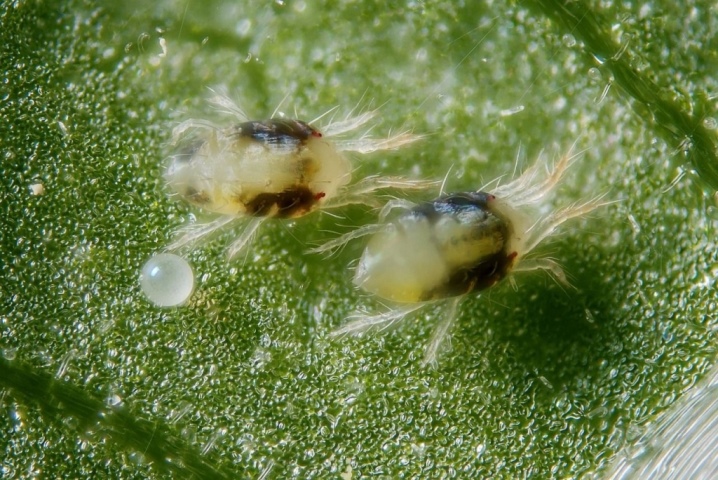
- Mealybugs, thrips, aphids withdrawn with the help of "Fitoverma", "Aktofit", "Aktara".
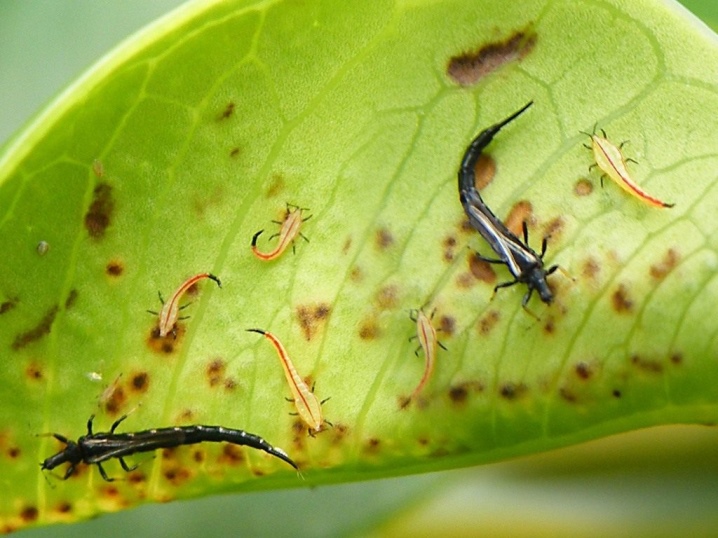
-
To combat botrytis gray, ash, scab, a fungicide solution is used. Bacterial spot is afraid of copper sulfate.
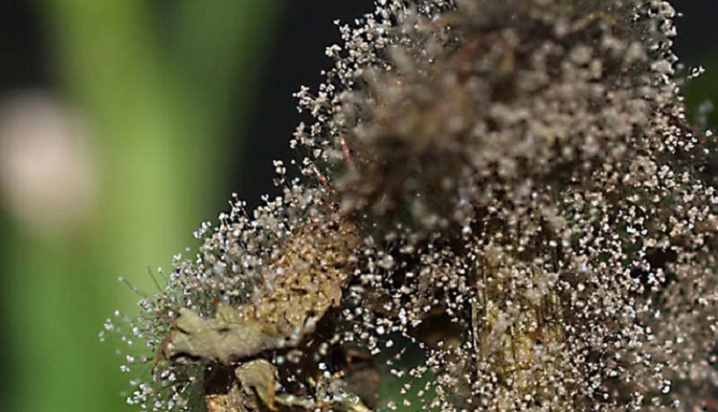
Examples in landscape design
See how wonderfully star-shaped magnolia decorates the landscape:
-
a lonely tree, whose near-trunk circle is lined with stones, resembles an oriental style;
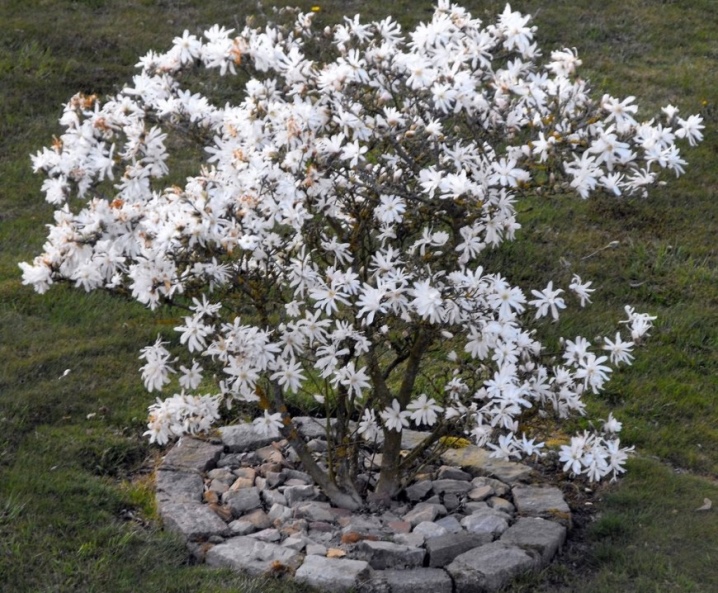
- decorative brick-colored gravel perfectly sets off the greenery of the bush and white "stars" flowers on it;
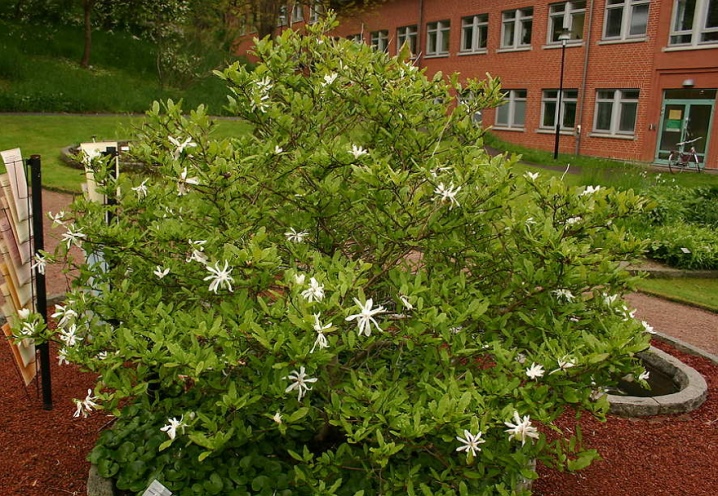
- The combination of varieties with flowers of different shades will give liveliness and brightness to your garden.


































































The comment was sent successfully.